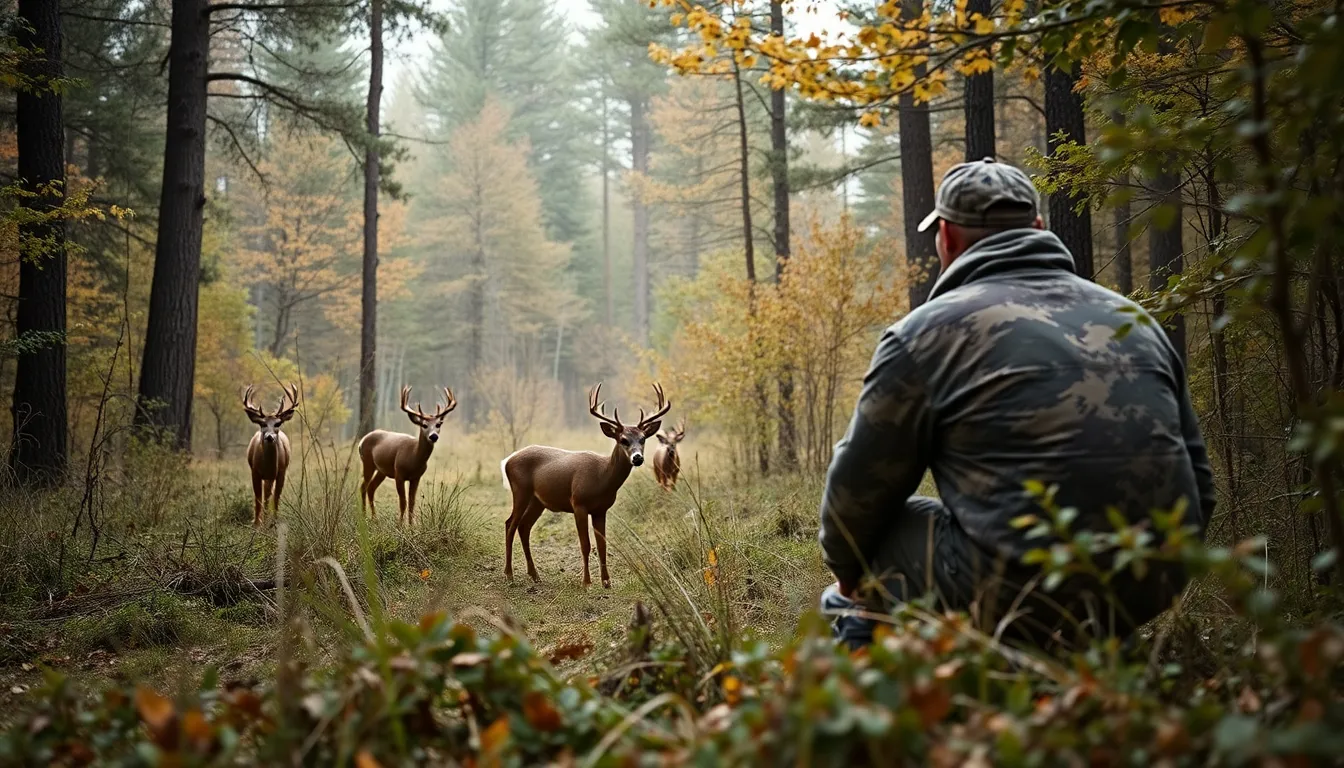Hunting is a time-honored tradition that connects individuals with nature and fosters a deeper understanding of wildlife. However, various limiting factors can significantly impact hunting success and the overall experience. From environmental conditions to regulations, these elements play a crucial role in shaping the hunting landscape.
Understanding these limiting factors is essential for both novice and seasoned hunters. They can influence everything from animal behavior to the availability of hunting grounds. By recognizing these constraints, hunters can better prepare and adapt their strategies, ultimately enhancing their chances of a successful outing. Whether it’s weather patterns, habitat availability, or legal restrictions, awareness of these factors is key to mastering the art of hunting.
Table of Contents
ToggleOverview of Limiting Factors in Hunting
Limiting factors in hunting encompass various elements that constrain the success of hunters. Understanding these factors is crucial for adapting strategies and improving outcomes. Key limiting factors include:
- Environmental Conditions: Weather impacts visibility, animal movement, and hunting conditions. Rain, snow, and temperature variations affect animal behavior and habitat accessibility.
- Regulations: Legal restrictions dictate hunting seasons, bag limits, and specific species. Knowledge of these rules ensures compliance and ethical practices within hunting areas.
- Animal Behavior: Wildlife exhibits patterns influenced by food availability, breeding cycles, and human activity. Awareness of these behavioral changes fosters more effective hunting plans.
- Habitat Quality: The condition of ecosystems affects animal populations. Healthy habitats support diverse wildlife, while degraded environments lead to lower densities and increased difficulty in finding game.
- Competitors: Other hunters, wildlife species, and even natural threats play a role in limiting hunting success. Understanding competition dynamics helps hunters navigate their surroundings more effectively.
- Equipment: Quality and appropriateness of gear directly influence hunting effectiveness. Using suitable weapons, clothing, and technology enhances a hunter’s capability to pursue game.
Recognizing and addressing these limiting factors empower hunters to enhance their overall experience and effectiveness in the field.
Biological Factors

Biological factors play a crucial role in determining hunting success. These elements include the interactions between predatory species and prey population dynamics, both of which significantly influence hunting outcomes.
Predatory Species
Predatory species affect hunting by controlling prey populations and influencing their behavior. Increased presence of apex predators, such as wolves or mountain lions, can lead to more cautious movements among prey species like deer or rabbits. In areas where predators are abundant, prey may select habitats that provide better cover, making them harder to hunt. Additionally, predation pressure can cause prey to alter their feeding patterns and times, affecting hunters’ opportunities.
Prey Population Dynamics
Prey population dynamics involve factors such as birth rates, mortality rates, and migration patterns. High birth rates in prey populations lead to increased availability, which can enhance hunting success. Conversely, overpopulation may cause resource depletion, resulting in decreased health and more challenging hunting conditions. Seasonal migrations of prey species shift their locations, requiring hunters to adapt strategies and remain informed about these movements to capitalize on their presence. Recognizing these dynamics allows hunters to target specific behaviors and locations, ultimately improving their chances for successful hunts.
Environmental Factors
Environmental factors significantly impact hunting success. They include habitat quality and weather conditions, both of which can influence animal behavior and availability.
Habitat Quality
Habitat quality determines the availability of food, water, and shelter for wildlife. Healthy habitats support diverse ecosystems, enhancing prey populations. Factors like vegetation type, cover, and land use affect animal movement and feeding patterns. For example, dense thickets provide refuge for deer, while open fields promote visibility, impacting hunting strategies. Additionally, habitat fragmentation may limit animal movement, making prey harder to find. Hunters need to assess the quality of prospective hunting areas to maximize their chances of success.
Weather Conditions
Weather conditions affect visibility, animal activity levels, and hunter comfort. Rain or fog can reduce visibility, complicating spotting and tracking prey. Temperature fluctuations also play a role; cooler weather often increases animal activity, resulting in more opportunities for hunters. Wind direction and speed impact scent travel, influencing how prey detect hunters. Understanding these weather-related factors allows hunters to adapt their strategies accordingly, enhancing their effectiveness in the field.
Social Factors
Social factors significantly influence hunting practices and outcomes. The interactions among hunters, communities, and governing bodies play an essential role in shaping hunting experiences and strategies.
Human Impact
Human impact encompasses social dynamics among hunting communities, including group sizes, skills, and shared knowledge. Larger groups may compete more fiercely for resources, creating tensions that affect individual hunters’ success. Strong social networks often lead to improved resource sharing, enhancing skill development and knowledge exchange. Community involvement in conservation initiatives fosters a better understanding of wildlife management, benefiting hunting populations. Increased awareness and respect for local ecosystems can lead to more sustainable hunting practices that consider community needs and environmental health.
Regulations and Policies
Regulations and policies shape the framework within which hunting occurs. Legal guidelines dictate hunting seasons, bag limits, and permitted methods, all designed to preserve wildlife populations and ecosystems. Local, state, and federal laws prioritize species conservation, impacting overall hunting success and strategies. Awareness of specific regulations helps hunters operate within the law while promoting ethical hunting practices. Community engagement in policy discussions, such as public hearings or consultations, ensures regulations reflect hunters’ input and ecological insights. Understanding the regulatory landscape allows hunters to adapt to changes, promoting a responsible and sustainable approach to hunting.
Recognizing the various limiting factors in hunting is essential for anyone looking to improve their success in the field. From environmental conditions to social dynamics and biological interactions, these elements shape the hunting experience. By understanding how these factors influence animal behavior and habitat quality, hunters can adapt their strategies effectively. This knowledge not only enhances their chances of a successful hunt but also promotes responsible practices that support wildlife conservation. Embracing these insights fosters a deeper connection with nature and a greater appreciation for the complexities of the hunting ecosystem.



